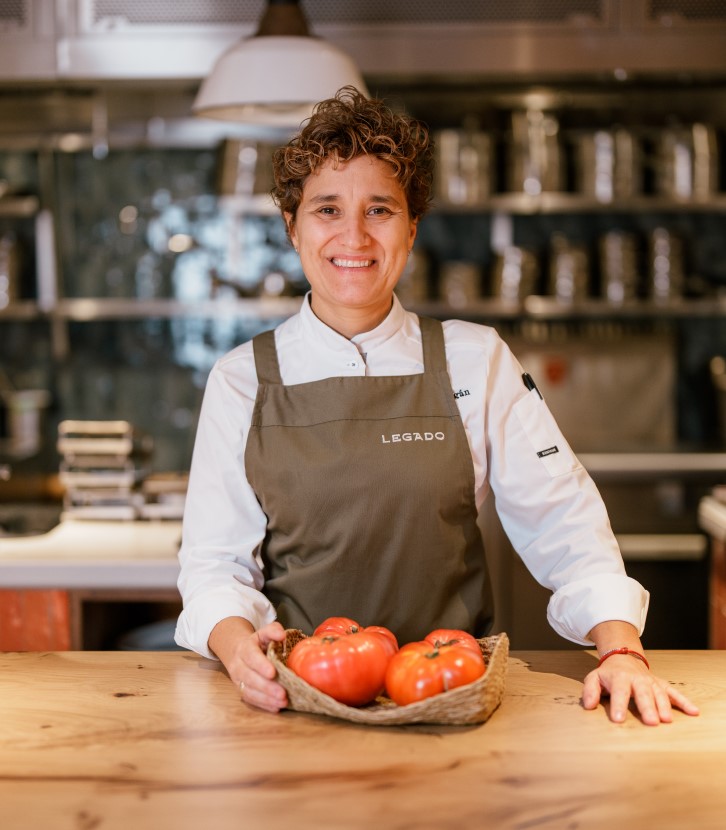Farm-to-table. Zero-waste. Circular economy. These are the buzzwords that plague the social media profiles and marketing spiels of any old restaurant looking for eco-friendly street cred befitting of the current zeitgeist, and Rishi Naleendra is having none of it.
Don’t get us wrong — the Sri-Lankan chef is tireless in paying his dues for gastronomic sustainability.
He sources produce from farms that have been certified for ethical and eco-friendly practices. He prioritises local vendors where possible. He maximises the yield of every ingredient, down to the nib. He incorporates trimmings into drinks, desserts, and staff meals. He switches out cling wrap for lids. And he recycles.

It’s just that when it comes to something as onerous and exacting as the concept of sustainability, Naleendra isn’t one to have his head in the clouds.
“This is probably one of the hardest topics to talk about, as sustainability within the restaurant context in Singapore tends to take on a narrow perspective — mostly focusing on sourcing, ingredients and minimum food waste,” he says.
“But it is almost impossible to get to a point of ‘farm-to-table’ since what we grow, catch or farm is limited. Recycling here is also challenging and comes at a very high cost,” he adds.

Waste Not, Want Not
Therefore, Naleendra takes on a pragmatic approach when it comes to sustainability in the kitchen, which looks to him like “knowing where our ingredients come from, who is growing and raising them, what their sustainability and animal welfare practices are, and choosing to use them at the restaurant.”

Examples of this are easy to find in either of his establishments. A Cloudstreet signature, Sri Lankan Curry of Western Australian Blue Marron, sees the star ingredient of freshwater crayfish substituted with Normandy blue lobsters during the former’s spawning season.
He also gets his herbs from nearby suppliers, though this locavore slant is more intensely expressed at Naleendra’s more casual Sri Lankan restaurant, where almost all of its vegetables, herbs and seafood can be found in Singapore and Malaysia.
And once these ingredients arrive at Naleendra’s restaurants, they typically only leave on a plate, in someone’s stomach, and almost never in a trash bag.
“We try to make the most out of every ingredient to minimise waste and maximise yield; using all parts but only if it aligns with our cuisine direction and adds value and enjoyment,” says the chef.
Take the marron — and its occasional substitute, the lobster — from the Sri Lankan curry signature. The flesh in the body is served to the customer, while the shell ends up as the aromatic base for a stock, bisque, or crustacean-scented oil.
Meanwhile, the claws are used for kitchen research and development — Naleendra is currently working on turning them into a snack — with the knuckles used for family meal, an industry term referring to the group meal fed to staff outside of peak business hours.

The same goes for other dishes in Cloudstreet’s arsenal. He works a pigeon’s breast, legs, heart, liver, and bones into every component of a dish, down to the Sri Lankan sausage stuffed in the fig and the jus draped over the plump bird. Tochigi A4 Wagyu gets a similar treatment, delivered whole and broken down with offcuts, fat, and sinew used to enhance the final product.
Sweet Sustainability
The chef brings that same ethos to dessert, both in terms of sustainable restaurant practices and as a means of delighting customers at the tail-end of their experience.
Says Naleendra, “I’ve found that tasting menus get a lot more exciting as it progresses, and once you get to desserts, it’s classic, which I like, but sometimes it’s a borderline afterthought. We really wanted to think about how to end a meal.”
The flavours he presents, therefore, are deliberately kept “bold, exciting, and contrasting”, so as to leave a taste in customers’ mouths that can only be attributed to Cloudstreet.
The restaurant’s current dessert course (pictured in the header image) features an ice cream made from whole cauliflower — first roasted, steeped in crème anglaise, and then blended. This is not the only vegetable they’ve featured, as previous menus have ended with porcini, artichoke, and laksa leaf ice cream.

Shades of Green
Despite his efforts, Naleendra opines that sustainability should go beyond the restaurant’s eco-footprint.
“Personally, I feel that we should broaden our view of restaurant sustainability and look more holistically into business sustainability, that encompasses financial sustainability, staff wellbeing and retention,” he says.
By training, counselling, and mentoring staff instead of losing them to industry churn, Naleendra believes that he’s creating a business that’s not only financially stable, but dependably excellent.
“In addition, our guests will also enjoy the consistency in our experience delivery,” he says.
All images are courtesy of Cloudstreet.




















